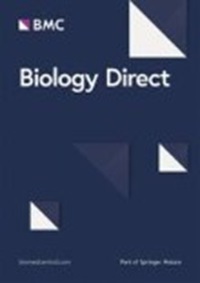ARMCX1 通过招募 FBXW7 降解 c-Myc 抑制肺腺癌的发展
IF 5.7
2区 生物学
Q1 BIOLOGY
引用次数: 0
摘要
犰狳重复含X连锁蛋白1(ARMCX1)是ARM重复X连锁蛋白家族的成员,在多种肿瘤中发挥抑制作用。然而,它在肺腺癌(LUAD)中的生物学作用及其潜在的分子机制还需要进一步探索。研究人员利用 LUAD 组织芯片和生物信息数据库评估了 ARMCX1 与临床病理特征之间的关系。通过菌落形成、CCK-8、EdU掺入、细胞周期、伤口愈合和Transwell试验确定了ARMCX1对体外LUAD细胞增殖、迁移和侵袭的影响。ARMCX1对LUAD细胞体内生长和转移的影响是通过皮下移植肿瘤和肺转移试验确定的。最后进行了 Western 印迹、免疫沉淀、免疫荧光、环己亚胺和蛋白酶体抑制剂检测,以探索潜在的分子机制。ARMCX1在临床LUAD样本中表达下调,导致患者预后不良。功能实验表明,ARMCX1的过表达抑制了LUAD细胞在体外和体内的生长和转移。分子机制表明,ARMCX1可招募E3泛素连接酶FBXW7,介导c-Myc的泛素化降解,抑制其核积累,最终使细胞周期和上皮-间质转化(EMT)信号失活。ARMCX1 通过与 c-Myc 相互作用,增强其泛素化和降解,从而抑制 LUAD 细胞的增殖和转移。因此,ARMCX1 可在该疾病中发挥肿瘤抑制因子的作用。这些结果表明,ARMCX1 是治疗 LUAD 的潜在靶点。本文章由计算机程序翻译,如有差异,请以英文原文为准。
ARMCX1 inhibits lung adenocarcinoma progression by recruiting FBXW7 for c-Myc degradation
Armadillo Repeat Containing X-Linked 1 (ARMCX1), a member of the ARM Repeat X-linked protein family, exerts inhibitory function in various tumors. However, its biological role in lung adenocarcinoma (LUAD) and the underlying molecular mechanisms require further exploration. LUAD tissue microarrays and bioinformatic databases were used to evaluate the relationship between ARMCX1 and clinicopathological features. The influence of ARMCX1 on LUAD cell proliferation, migration, and invasion in vitro was determined by colony formation, CCK-8, EdU incorporation, cell cycle, wound healing, and Transwell assays. The impact of ARMCX1 on LUAD cell growth and metastasis in vivo was determined by subcutaneously transplanted tumor and pulmonary metastasis assays. Western blot, immunoprecipitation, immunofluorescence, cycloheximide, and proteasome inhibitor assays were finally conducted to explore the potential underlying molecular mechanisms. ARMCX1 expression was downregulated in clinical LUAD samples due to which patient prognoses were poor. Functional experiments indicated that ARMCX1 overexpression inhibited the growth and metastasis of LUAD cells in vitro and in vivo. The molecular mechanism suggested that ARMCX1 recruits the E3 ubiquitin ligase FBXW7 for mediating ubiquitinated degradation of c-Myc, suppressing its nuclear accumulation, and ultimately inactivating cell cycle and epithelial-mesenchymal transition (EMT) signals. ARMCX1 inhibits LUAD cell proliferation and metastasis by interacting with c-Myc and enhancing its ubiquitination and degradation. Consequently, it can act as a tumor suppressor in this disease. These results suggest that ARMCX1 is a potential target in the treatment of LUAD.
求助全文
通过发布文献求助,成功后即可免费获取论文全文。
去求助
来源期刊

Biology Direct
生物-生物学
CiteScore
6.40
自引率
10.90%
发文量
32
审稿时长
7 months
期刊介绍:
Biology Direct serves the life science research community as an open access, peer-reviewed online journal, providing authors and readers with an alternative to the traditional model of peer review. Biology Direct considers original research articles, hypotheses, comments, discovery notes and reviews in subject areas currently identified as those most conducive to the open review approach, primarily those with a significant non-experimental component.
 求助内容:
求助内容: 应助结果提醒方式:
应助结果提醒方式:


